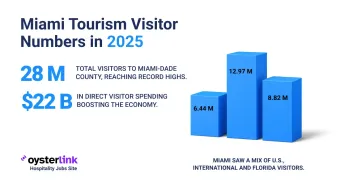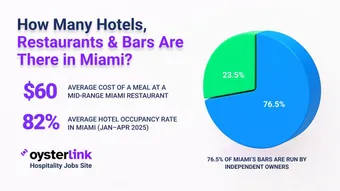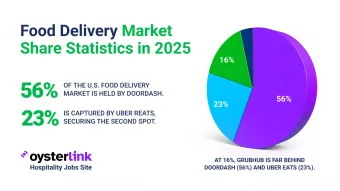Cheyenne, WY Cost of Living: Quick Takeaways
- Housing Costs:Rent for a one-bedroom apartment increased from $700 in 2010 to $1,150 in 2025.
- Transportation Expenses:Public transit monthly passes average $50 with fuel prices around $3.00 per gallon in 2025.
- Healthcare Costs:Employer-sponsored health insurance costs approximately $150 per month, lower than national averages.
- Income Levels:Median household income grew steadily to $67,000 by 2025, supporting living costs.
Cheyenne, Wyoming, offers a modest cost of living with steady growth in housing and income levels. The city's affordability appeals to both families and individuals.
This article provides a thorough breakdown of the cost of living components in Cheyenne as of 2025, covering housing, transportation, utilities, and more.
1. Housing Costs in Cheyenne, WY
Housing remains a core expenditure for residents. Here's an overview of average rents for a one-bedroom apartment over recent years:
- 2010: $700
- 2015: $850
- 2020: $1,000
- 2024: $1,100
- 2025: $1,150
Rental prices have increased steadily, reflecting demand and regional economic factors.
For hospitality employers and property managers interested in market insights, see our detailed hospitality real estate market trends analysis.
2. Homeownership and Real Estate Trends in Cheyenne, WY
For those interested in purchasing a home, median prices have trended upward:
- 2010: $150,000
- 2015: $180,000
- 2020: $220,000
- 2024: $250,000
- 2025: $260,000
The rising home prices suggest an appreciating real estate market, important for potential buyers to consider.
3. Transportation Expenses
Transportation costs in Cheyenne include various modalities:
- Public Transit: One-way fare is $1.50; monthly passes cost around $50.
- Fuel Costs: Average fuel price per gallon is $3.00.
- Vehicle Maintenance: Annual maintenance averages $1,000.
Costs can vary with commuting distances and personal vehicle use.
4. Utility Costs
Monthly utility expenses for an average household include:
- Electricity: $100
- Internet: $60
- Total Utilities: Approximately $160
Utilities remain affordable compared to many other cities.
5. Grocery and Food Expenses
Grocery prices align slightly below national averages, supporting economical food budgets.
Monthly grocery costs are estimated at $250 per person. Dining out varies with casual meals averaging $12 and mid-range restaurant meals about $40.
Restaurant owners looking to reduce food waste and optimize costs can benefit from strategies outlined in our restaurant food waste statistics spotlight.
6. Healthcare Costs
Healthcare expenses include insurance premiums and out-of-pocket payments.
Employer-sponsored health insurance costs approximately $150 monthly, while a silver plan averages $500 per month, offering more comprehensive coverage options.
7. Educational Expenses
Education costs in Cheyenne feature various options:
- Public Schools: No direct tuition cost as funded by taxes.
- Private Schools: Average tuition is about $8,000 per year.
- In-State University: Tuition averages $5,000 annually.
These costs are important for families budgeting for education.
8. Entertainment and Leisure
Entertainment costs contribute to overall living experiences:
- Movie Tickets: About $10 each.
- Gym Membership: Approximately $30 per month.
- Meals at Mid-Range Restaurants: Around $40 per meal.
Cultural and recreational activities remain accessible at reasonable prices.
9. Taxes and Miscellaneous Fees
Tax rates affect disposable income and should be accounted for:
- State Income Tax: Wyoming has no state income tax.
- Sales Tax: The sales tax rate is 6%.
- Property Tax: A moderate rate at 0.61%.
These low taxes contribute to Cheyenne's affordability.
10. Childcare and Family Expenses
Child-related expenses are considerable for families:
- Daycare: Average monthly cost is $800.
- After-School Programs: Around $200 per month.
- Extracurricular Activities: Estimated $100 per month.
Budgeting for these expenses is crucial for households with children.
11. Clothing and Personal Care
Monthly expenses for apparel and personal maintenance are moderate:
- Clothing: $100 monthly average spending.
- Personal Care Products and Services: About $50 per month.
These costs may fluctuate with personal preferences.
12. Insurance Costs
Insurance coverage protects against risks and obligations:
- Health Insurance: Average monthly premium is $500 for 2025.
- Auto Insurance: Annual premiums average $1,200.
- Homeowners Insurance: Approximately $1,000 annually.
- Renters Insurance: Around $200 per year.
Insurance is a necessary component of financial planning.
13. Miscellaneous Expenses
Additional costs contribute to lifestyle quality:
- Entertainment Annual Spending: About $2,000.
- Personal Care Services: Around $600 yearly.
- Miscellaneous Goods and Services: Estimated at $500 annually.
Such expenses vary based on habits and preferences.
14. Income and Salaries
Income trends reflect economic opportunities:
- 2010: Median household income $50,000.
- 2015: $55,000.
- 2020: $60,000.
- 2023: $65,000.
- 2025: $67,000.
This gradual increase supports rising living costs in Cheyenne.
Hospitality employers interested in understanding wage growth and salary ranges can explore insights on hospitality wages in 2025.
15. Comparison with National Averages
Cheyenne's cost of living compares favorably with national figures:
- Overall: 5% lower than national average.
- Housing: 10% less costly.
- Utilities: 5% cheaper.
- Food: 3% lower.
- Healthcare: 4% less expensive.
- Transportation: 2% cheaper.
- Goods and Services: 3% less costly.
The affordability supports a high quality of life for residents.
Our Methodology for Cheyenne Cost of Living Figures
We compile data from reputable sources like Numbeo, BLS, MIT Living Wage Calculator, Zillow, Statista and official government statistics. Where exact data is unavailable we provide well-informed estimates to offer a clear overview of living costs.
Cheyenne, WY Cost of Living: Conclusion
Cheyenne offers an affordable cost of living with steady income growth supporting residents. Housing and utilities remain less expensive than many areas while transportation and healthcare costs are moderate.
Understanding these cost factors helps current and prospective residents plan effectively and enjoy a balanced lifestyle in Wyoming's capital city.
Employers looking to improve their hiring strategies in this region might find useful guidance in our spotlight on restaurant staff hiring.




